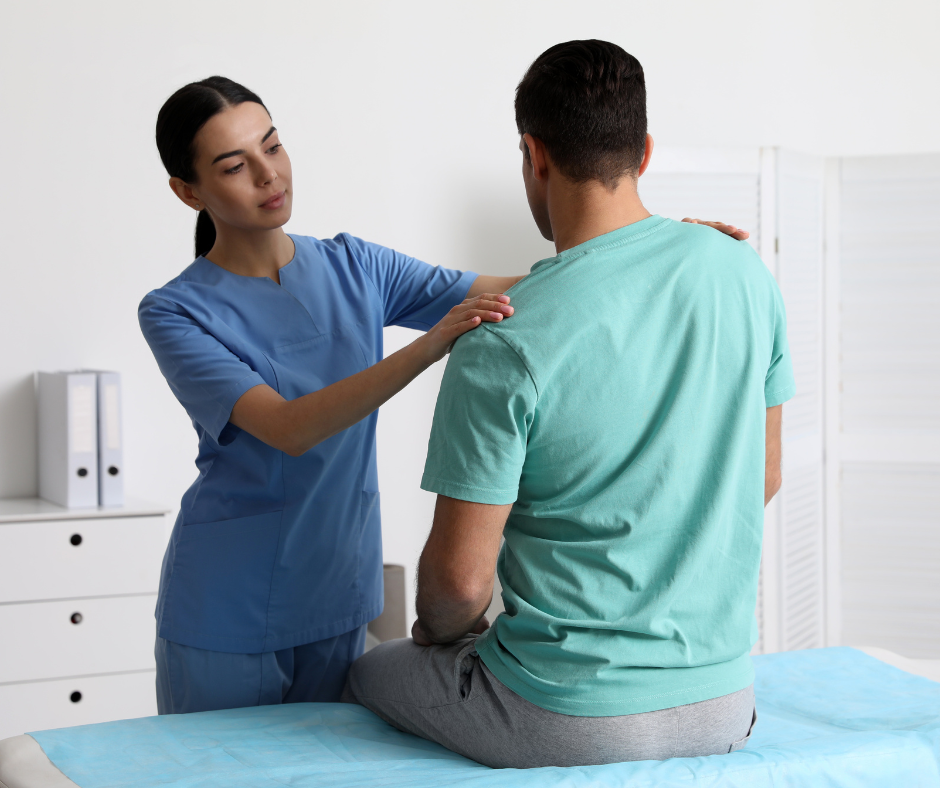24/7 online booking

Can Osteopathy Help Scoliosis? A Holistic Approach to Managing Spinal Curvature
Scoliosis, a condition characterised by an abnormal curvature of the spine, can range from mild to severe, affecting posture, mobility, and overall quality of life. While scoliosis is often managed through observation, bracing, or surgery in severe cases, osteopathy offers a complementary and non-invasive approach that can help alleviate symptoms and improve function. In this blog, we will explore how osteopathy can support individuals with scoliosis and contribute to better spinal health.
Understanding Scoliosis
Scoliosis involves a lateral (sideways) curvature of the spine, often accompanied by rotation of the vertebrae. The condition can develop during childhood or adolescence (idiopathic scoliosis), though it can also occur in adults due to degenerative changes, congenital abnormalities, or neuromuscular conditions.
The severity of scoliosis is measured by the degree of spinal curvature:
- Mild scoliosis: Typically involves a curve of less than 20 degrees and often requires minimal intervention.
- Moderate scoliosis: A curve between 20 and 40 degrees may require more active management, such as bracing.
- Severe scoliosis: A curve of over 40 degrees can lead to significant physical changes and may require surgical intervention.
Common symptoms of scoliosis include:
- Uneven shoulders or hips
- Prominent ribs or shoulder blades
- Back pain or discomfort
- Reduced range of motion
- Postural changes
How Can Osteopathy Help with Scoliosis?
Osteopathy focuses on the musculoskeletal system, using hands-on techniques to promote balance, improve mobility, and support the body’s natural healing processes. For individuals with scoliosis, osteopathy can offer several benefits, including pain relief, improved posture, and enhanced overall function.
1. Relieving Pain and Discomfort
One of the primary goals of osteopathic treatment for scoliosis is to alleviate pain and discomfort associated with the condition. Scoliosis can cause muscle tension, joint stiffness, and nerve compression, leading to pain in the back, shoulders, and sometimes even the legs.
- Soft tissue massage: Osteopaths use gentle massage techniques to relax tight muscles, reduce muscle spasms, and improve blood flow to the affected areas. This can help alleviate pain and enhance comfort.
- Joint mobilisation: Gentle manipulation of the spine and surrounding joints can help improve mobility and reduce stiffness, making it easier to manage the daily discomfort that often accompanies scoliosis.
2. Improving Posture and Spinal Alignment
While osteopathy cannot reverse the curvature caused by scoliosis, it can help improve posture and spinal alignment by addressing compensatory issues in other parts of the body. Over time, these adjustments can contribute to better overall posture and reduce the impact of the spinal curvature.
- Postural correction: Osteopaths assess the body as a whole, identifying areas of imbalance that may be exacerbating the curvature. By working on these areas, they can help reduce the strain on the spine and encourage a more balanced posture.
- Exercise prescription: Osteopaths often recommend specific exercises to strengthen the core muscles that support the spine, as well as to improve flexibility and balance. Strengthening these muscles can help stabilise the spine and reduce the progression of the curve.
3. Enhancing Mobility and Function
Scoliosis can limit the range of motion and affect daily activities, particularly if the curvature is significant. Osteopathy aims to restore and enhance mobility, making it easier for individuals with scoliosis to maintain an active lifestyle.
- Stretching techniques: Osteopaths may use targeted stretching to improve flexibility in the muscles and ligaments around the spine. This can help reduce stiffness and increase the range of motion in the back and shoulders.
- Functional movement training: Osteopaths may also work with patients to improve their functional movement patterns, such as bending, lifting, and walking. By promoting better movement habits, osteopathy can help reduce the risk of strain and injury.
4. Supporting Long-Term Health and Wellbeing
Osteopathy takes a holistic approach to health, focusing not just on the symptoms of scoliosis but on the overall wellbeing of the individual. This includes providing advice on lifestyle factors that can support long-term spinal health.
- Lifestyle and ergonomic advice: Osteopaths can offer guidance on how to adapt your environment and daily activities to reduce strain on the spine. This might include advice on proper sitting and standing posture, as well as tips for setting up a workspace that supports spinal health.
- Stress management: Chronic pain and discomfort from scoliosis can lead to stress and tension, which in turn can worsen muscle tightness and pain. Osteopaths may use relaxation techniques, such as cranial osteopathy, to help manage stress and promote overall wellbeing.
When to Consider Osteopathy for Scoliosis
Osteopathy can be particularly beneficial for individuals with mild to moderate scoliosis, especially those who are looking for a natural, non-invasive approach to managing their condition. It can also complement other forms of treatment, such as physiotherapy or medical care, by providing additional support for pain relief and improved function.
Before starting osteopathic treatment, it is important to consult with your GP or a specialist to ensure that osteopathy is a suitable option for your specific case of scoliosis. This is especially important if you have severe scoliosis or other underlying health conditions.
Conclusion
Scoliosis can be a challenging condition to manage, but with the right approach, it is possible to alleviate symptoms and improve quality of life. Osteopathy offers a gentle, holistic method of treatment that addresses both the physical discomfort and the broader impacts of scoliosis. By focusing on pain relief, posture correction, and overall function, osteopathy can help you maintain an active, healthy lifestyle despite the challenges of living with scoliosis.
If you or a loved one is dealing with scoliosis and are interested in exploring how osteopathy can help, consider consulting a registered osteopath. Together, you can develop a personalised treatment plan that supports your journey to better spinal health and overall wellbeing.
If you would like to book and appointment with us, you can do so by clicking here.

Leave a comment